Editor’s Note: As if we don’t have enough movies to review! An anonymous reader confessed their love for this movie and baffled how we never included it as part of our endless apoc-love at B&S About Movies. You know the drill, ye reader: Strap on the popcorn bucket, let’s apoc this mother, Texas-style!
And it just goes to show you: Reviewing VHS junk like Cybernator — a film not reissued on DVD that’s being promoted by a studio shingle, reviewed for the simple passion of the film itself — pays off. In fact, another reader’s suggestion inspired our review of Robo Warriors, posting later today.
When it comes to the ‘80s video fringe, we not only expect the bizarre—we demand the bizarre. Austin, Texas, filmmaker Ronald W. Moore—in his only feature film writing and directing effort—answered that challenge with a sci-fi black-comedic pastiche of the Italian apocalypse rip-offs of John Carpenter’s Escape from New York and the “snob vs. slobs” rip-offs of Animal House. Only the slobs have been replaced by Reagan-era nuclear punks overlorded by Splatter, a plastic-cum-cardboard Robocop on a Terminator tear.

If you’ve watched the nondescript, post-apocalyptic ramblings of City Limits, the punk-rock apoc-drivel of Radioactive Dreams and the rad n’ gnarly post-apoc shenanigans of Night of the Comet, then you’ve traveled these low-budget streets before; streets that—outside of a few techno-trinkets to make the proceedings seem like the future—look just like our present-day streets. And when that “present-day” apocalypse arrives, be it via “The Big One” or by plague or by comet or by whatever nuclear deus ex machina falls from above, the “mutants,” depending on the film’s budget, raid the local S&M leather boutique or Reagan-era Mohawk-and-heavy mascara emporium. And at a reported $250,000 budget, Future-Kill raids the latter retailer to give us gangs of disenfranchised punks—punks who got lost on the set of Enzo G. Castellari’s The Bronx Warriors and Escape from the Bronx while on the way to their background acting gigs for Suburbia and Repo Man. And Lord Cyrus help them if they stumbled onto the set of The Warriors (Future-Kill’s most obvious model), for these MTV video punks won’t stand a chance against the Baseball Furies, the Electric Eliminators, the Gramercy Riffs, and Turnbull AC’s*.
Maybe if Future-Kill were as entertaining as any of those films and not the apoc-swill that is America 3000 and Robot Holocaust (okay, maybe it’s a wee bit better than those two swillers: a wee bit). Maybe if the proceedings were more Wendy O. Williams and the Plasmatics (“Butcher Baby“) and less Dale Bozzio and Missing Persons (“Words“) roamin’ those Austin mean streets and the gangs were more Walter Hill-inspired, Future-Kill could have lived up to its faux H.R Giger packaging. Yeah, at the time, we thought the artwork was a bogus H.R Giger rip-off hawking another R.O.T.O.R artwork-hiding-a-shitty-film scam, so we avoided renting Future-Kill during its VHS heyday.
Then Ronald W. Moore’s apoc-meets-frat comedy boondoggle became connected to Oscar gold.
John Hawkes, one of Future-Kill’s minor support actors, ended up at the 83rd Annual Academy Awards held in 2011 and rubbed elbows with Tom Hanks—who has his own ‘80s VHS debut-acting bone in the closet with He Knows You’re Alone. So, its Texas Chainsaw and H.R Giger faux-connections aside, how can one not want to watch Future-Kill, once learning that one of its actors earned multiple “Best Actor” nominations and awards between 2010 to 2012 for the films Winter’s Bone, Martha Marcy May Marlene, and The Sessions? (Another of John’s early, minor support roles was working with Gregory Hines in the 1994 radio-set thriller, Dead Air.)
However, before the mainstream success of John Hawkes inspiring us to seek out copies of Future-Kill, the truth behind that “bogus” H.R. Giger artwork was finally told in an audio commentary by director/writer Ronald W. Moore and producer/star Edwin Neal—courtesy of a 2006 Subversive Cinema DVD reissue that included reproductions of Giger’s original artwork for the film.
While H.R Giger famously provided production drawings for Alien (as well as 1995’s Species), the Swiss surrealist rebuffed several studio offers to design theatrical one-sheets, including overtures from 20th Century Fox, the studio that brought his work to a mass audience (with an honorable mention to ‘70s prog-rockers Emerson, Lake and Palmer; the band used Giger’s work on their 1973 album Brain Salad Surgery**). So, it’s a shock to discover that the artwork for Future-Kill is, in fact, a real Giger, titled “Future Kill 1,” painted in 1984 specifically for the film.
According to the Alien Explorations, which chronicles the works of Giger, Giger was a fan of Tobe Hooper’s film; since Future-Kill featured two actors from Texas Chainsaw, he agreed to design the poster. At the time, Ronald W. Moore completed filming and was in the editing process when he approached the artist at a Zurich exhibition and begged Giger to design the poster (Giger has stated Moore was in tears at one point)—based on the fact Moore prematurely promised investors a theatrical one-sheet by Giger, so to secure film financing. Now Moore had to pay up, figuratively speaking. Also enticing Giger to design the poster: Giger and Kathy Hogan—the make-up and costume designer who developed Splatter’s bat wing and Mohawk-styled shoulder and helmet armor, which served as the model for Giger’s artwork—came into a sexual relationship.
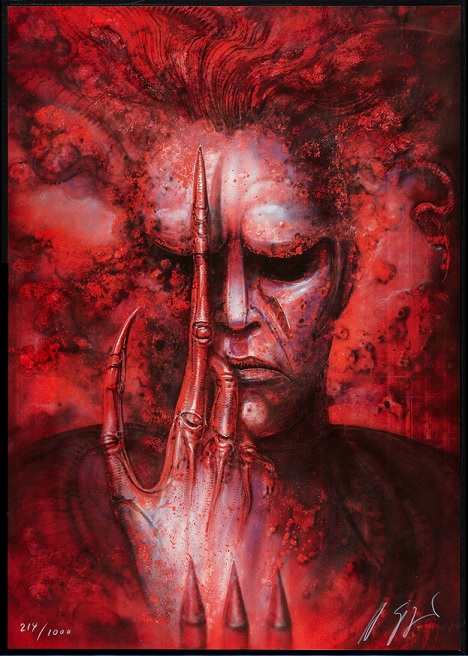
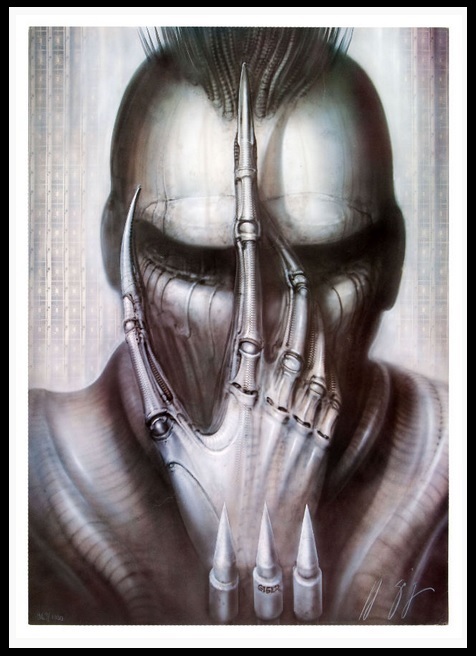
While Hawkes was only a minor support player, the real “stars” of Future-Kill were Edwin Neal and Marilyn Burns, each who appeared in Texas Chainsaw. However, even with that “star power,” the film still lacked “major stars” and received its limited, regional theatrical release solely based on the fact that “the artist who did Alien” designed the poster (and the film looked nothing like Alien, natch). Also of note: Edwin Neal didn’t “star” in Texas Chainsaw; he had an extended cameo as a self-cutting hitchhiker; meanwhile, Marilyn Burns, who starred in Texas Chainsaw, only has an extended cameo in Future-Kill. The film’s Texas Chainsaw-connection also goes a bit deeper, as Ronald W. Moore got his start in the business as a soundman on Mongrel; the film also served as the lone directing effort by art director Robert A. Burns, who worked in that capacity on The Hills Have Eyes, Don’t Go Near the Park, and The Howling—as well as the The Texas Chainsaw Massacre; Burns was responsible for the “bone furniture” and its related “bone room” scene.
Maybe, if Moore hired Robert A. Burns to work on the set of Future-Kill, we’d have a film that looked as good as those films—and its chief protagonist, Splatter, would have been the Gigeresque biomechanical xenomorph promised and not the low-rent Godfrey Ho wannabe we got; if you’ve seen Ho’s Pacific Rim cyborg romp Robo Vampire (1988), then you understand that analogy to the canons of “Hong Kong’s Ed Wood.” Godfrey Ho, as with ‘60s U.S. drive-in purveyor Al Adamson before him, was infamous for splicing two or three unrelated films into a new product. And, at first watch and without knowing the backstory of Future Kill, it looks as if Ronald W. Moore assembled his own portmanteau poo akin to Night Train to Terror (which is three movies spliced into one) and Evil Town (which is a four-director junkfest rooted in a mid-‘70s horror dumpster-fire called God Bless Dr. Shagetz).
Now, that’s not the case with Future-Kill, but it sure seems like two, unrelated, spliced scripts or unfinished films: one a failed frat-house comedy; the other a failed post-apocalyptic tale. And thanks to the ‘80s frat house hi-jinks and the Philippines-cum-Italian future world we’re watching, we have no idea what the hell is going on or where we are. The “destination,” to paraphrase the lyrics of Missing Persons, is “unknown.”
Oh, Wendy! Are we beyond the valley of 1984? Will extras show up in monkey suits? When does this future-world of Future-Kill take place? What’s the Orwellian masterplan, dag gummit!?
Well, it must be in an alternate universe or timeline or a future stuck in a DeLorean time loop where technology has afforded us the ability to create cyborgs—while everything else looks ‘80s “snobs vs. slobs” comedic. And since we’re on the cheap, our “mutants” aren’t so much nuc-deformed; they’re just a bunch of snotty, Reagan-era punks with an anti-nuclear chip on their shoulders. You know the punk-type: As with my ex, Dawn, she listened to a couple of Black Flag and Dead Kennedy records, went to spoken word concerts by Henry Rollins and Jello Biafra, then raised the flags against Halliburton and rallied about “Blood for Oil” through the puffs of her clove cigarettes, its scented fumes clinging to the fibers of her faded, Hot Topic Clash tee-shirt.
Anyway, in Ronald W. Moore’s future world, those errant punk rock scamps have—in an eerie foreshadow of the sociopolitical upheavals of 2020—formed their own CHOP/CHAZ perimeter in downtown Austin, Texas, as part of an anti-nuclear movement. The most feared of all of the nuc-mutants is Splatter (Texas Chainsaw’s Edwin Neal), the aforementioned Robocop-cum-Terminator, whose radiated mutations have turned him into a metal-and-spiked covered madman.
Okay, so that takes care of the “slobs” portion of the film.
Meanwhile, back on the campus of Faber College in snobby Porkyville, out in the ritzy, unaffected Austin environs, our perpetually partying preppy a-holes live a carefree life of booze, boobs, and pranks where rich parents get them out of their Hunter Bidenesque jams. When one of their pranks risks the shutdown of their frat, our frat-lads are forced to dress “punk” by a rival frat and venture into slobby Punkville to kidnap one of the mutants for an end-all-be-all of all pranks. Of course, they run afoul of the metal-clad n’ spiked Splatter. Oops.
Okay, so begins The Warriors portion of our film.
Once Splatter (our “Luther,” if you will) settles his Alpha-Male dispute (i.e., murder) with Eddie Pain (our “Cyrus,” natch), the anti-nuke movement’s ‘60s-inspired hippie-punk leader (uniting the gangs, natch), our Robonator is off-the-chain with a Termicop chip on his shoulder—and he’s framed our prep-boys (i.e., The Warriors) for Pain’s murder. As our Delta House rejects make their “Escape from Austin,” they save a hot mutant punk chick from pervert cop rape because, well, as usual, when the apocalypse arrives, man’s inner “rape genes” mutate, so as to preserve the species. And preppy boy falls for punky girl. And we hear a few tunes—in the best part of the film—from real life Austin band Max and the Make-Ups (but we wished The Plamastics showed up to do do “Black Leather Monster“) as we (finally) meet Texas Chainsaw’s Marilyn Burns in her under 20-minutes role as Dorothy Grimm, the revenge-seeking girlfriend of Eddie Pain.
Is it a plot-spoiler telling you Splatter dies and the preps Escape from Austin? And it all plays as if Universal ripped this for Judgement Night, their 1993 suburbanites-lost-in-the-underbelly-of-the-mean city starring Emilio Estevez pursued by Denis Leary?

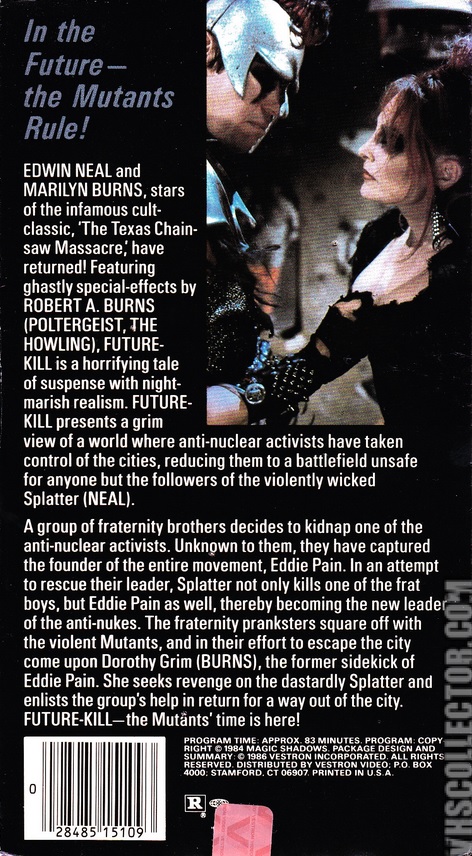
When submitted to the ratings board for its limited, regional theatrical run in and around its native Austin, Future-Kill received an “X” rating for extreme violence. One minor edit was made to secure an “R” rating in the U.S. Meanwhile, across the ocean, while the puritanical purveyors of philth (know your Motorhead) in the U.K. didn’t toss Future-Kill onto their “Video Nasties” list, they forced a title change to Night of the Alien (in other overseas quarters the title Splatter was used) and two-and-half minutes were cut—which eliminated a neck breaking, the killing of Clint (one of the preps), portions of Splatter’s stabbing, a woman’s fondling by Splatter, and Splatter’s sexual encounter with a street girl—all of which were restored on the subsequent DVD released by Subversive Cinema.
You can watch VHS rips of Future-Kill on You Tube HERE and HERE. You can also learn more about the film with this behind the scenes, 30-minute featurette created for the Subversive DVD. The trailers come and go, but we got the TV trailer and the VHS trailer on You Tube.
Oh, we almost forgot about the pinball machine!
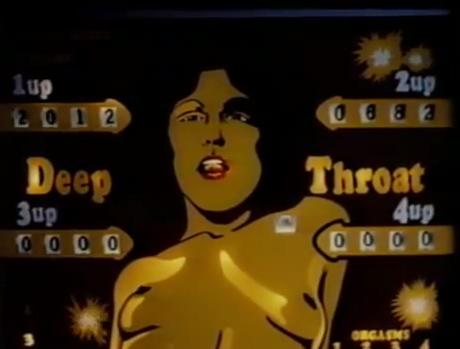
The infamous Deep Throat pinball machine, custom made by Robert A. Burns, which made its debut in Mongrel, also appears in Future Kill. The history of the game is discussed on the pinside.com message boards, your source for all things pinball. After we posted our October 2020 review of Mongrel, Joe ‘O Donnell, feverishly working on his Rondo Hatton documentary Rondo and Bob, let us know he is no longer in possession of the pinball machine. It was sold to help fund the production of Rondo and Bob and is now with a private collector. The good news is that Rondo and Bob, the story of Robert A. Burns’s fandom of Rondo Hatton, is completed and heading to film festival circuit.
* Oh, the mighty QWERTY’in warriors of the Internet, you gotta love ’em. Jennifer M. Wood, over at Mental Floss, took up the challenge to chronicle all of the street gangs in 1978’s The Warriors in her feature “21 Street Gangs Features in The Warriors.” Nice!
** H.R Giger’s work will be incorporated into the currently-in-development film Karn Evil 9 based on the rock-suite of the same name from Emerson, Lake and Palmer’s rock-opera Brain Salad Surgery.
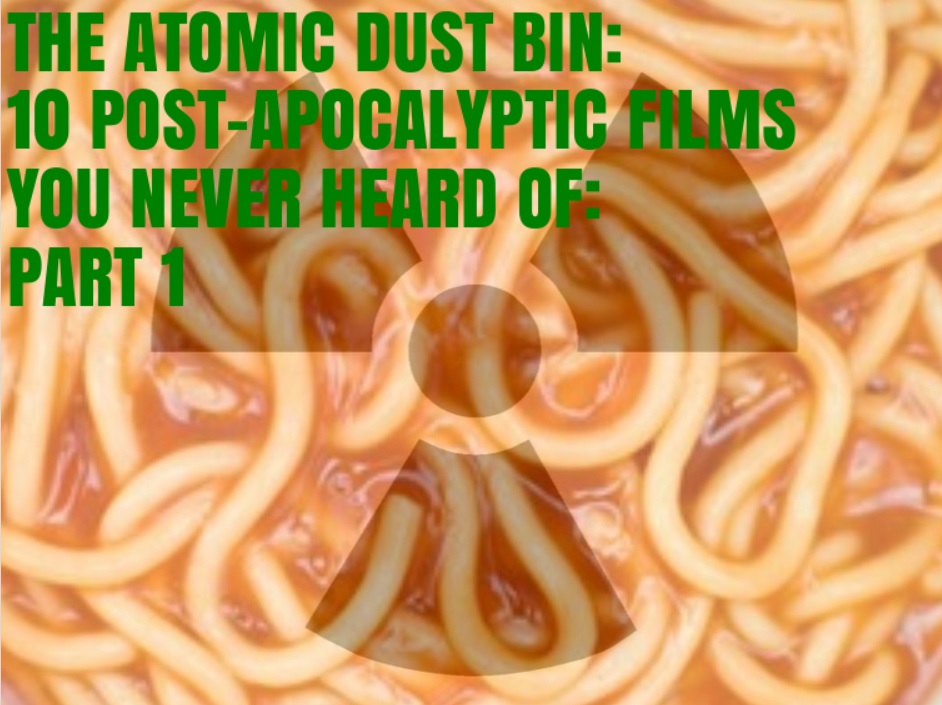
Note 1: As always, thanks to Paul Z. over at VHS Collector.com, once again, for the artwork assist. Be sure to check out his reviews for the latest DVD and Blu-ray reissues of our favorite VHS classics at his Analog Archivist You Tube portal.
Note 2: We’ve since received a copy of and reviewed Rondo and Bob.
Note 3: If you have a favorite film that we’ve missed, you’re welcome to let us know via our contact form. We’re always hearing from our many, ever-growing readers and welcome you to join in the fun. We’re united in film! And thanks for thinking of us to review your favorites. We try our best. Keep those suggestions coming. When you’re nice to us, we return the favor!
About the Author: You can read the music and film reviews of R.D Francis on Medium and learn more about his work on Facebook.